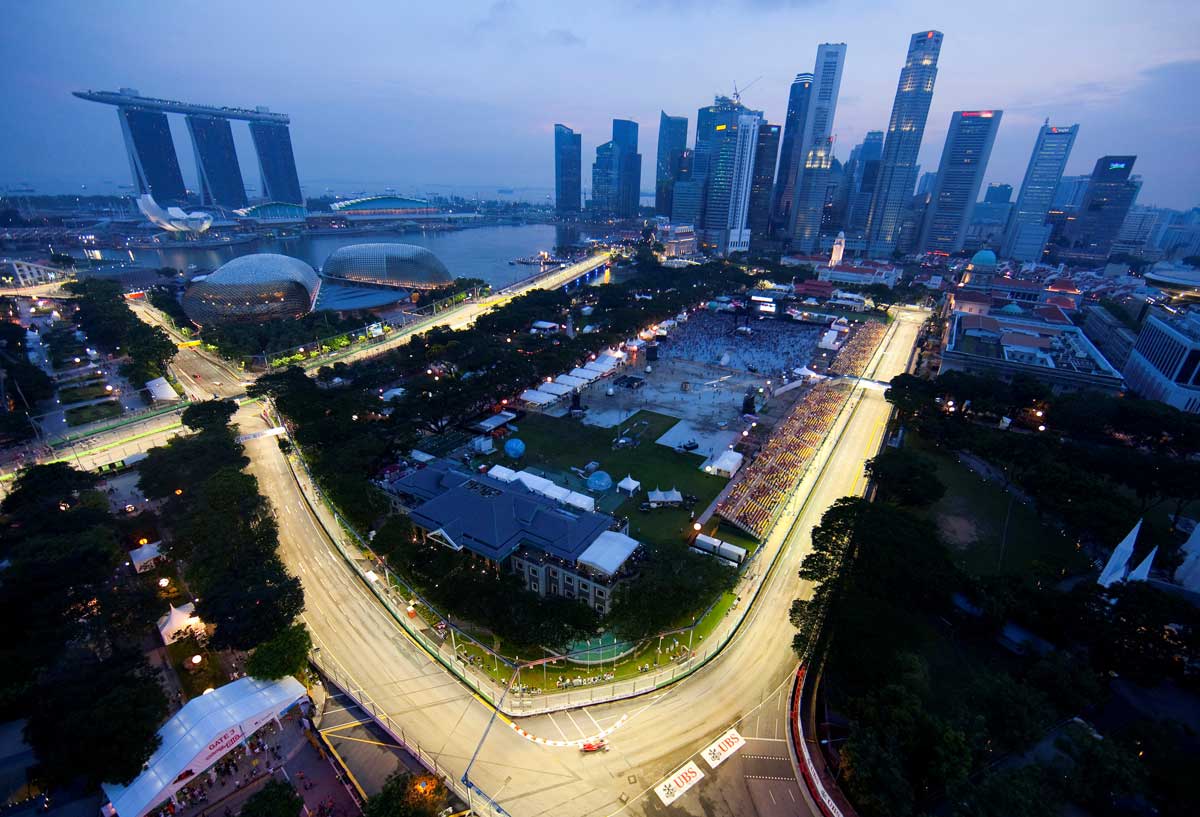SINGAPORE – Formula One supremo Bernie Ecclestone has cast doubt over the future of the sport in Southeast Asia by telling a German magazine that Singapore no longer wants to host a grand prix after its current deal expires next year.
With neighbouring Malaysia also considering pulling out of the championship after 2018 because of declining ticket sales and TV viewership, the region could be left without a race for the first time since 1998.
The Singapore race costs some S$150 million ($105.04 million) to put on every year, 60 per cent of which is funded by the government. It was first staged in 2008 and the city-state renewed its contract for another five years in 2012.
Ecclestone’s blunt comments in Auto Motor und Sport, however, suggested negotiations over a further extension have not gone well.
“Look at what we have done for Singapore,” Ecclestone said. “Yes, the grand prix has cost Singapore a lot of money, but we’ve also given them a lot of money. “
Singapore was suddenly more than just an airport to fly to or from somewhere.
Now they believe they have reached their goal and they do not want a grand prix anymore.
” The event is organised in the city-state by Singapore GP, a private company owned by Ong Beng Seng, one of Singapore’s richest men.
A spokeswoman for the company said in an e-mail on Monday: “We don’t comment on ongoing commercial negotiations.”
Ecclestone, 86, is famous for outspoken media interviews during negotiations.
The Briton did not attend this year’s Singapore race as he was held up by negotiations on F1’s takeover by US cable TV mogul John Malone’s Liberty Media .
Formula One announced a record-equalling 21-race provisional calendar for 2017 in September.
The Singapore race is one of the glamour rounds of the championship, taking place at night on a street circuit with spectators entertained by internationally renowned music acts such as Beyonce and Justin Bieber.
Crowds, which topped 100,000 on all three days in the first year, have declined, however, with this year’s race averaging 73,000 spectators for each day, down from 87,000 in 2015.
 Photo Gallery
Photo GalleryEntertainment highlights for F1 2016
-

<!–
-

<!–
-

<!–
-

<!–
-

<!–
-

<!–
-

<!–
-

<!–
-

<!–
-

<!–
-

<!–
-

<!–
-

<!–
-

<!–
-

<!–
-

<!–
-

<!–
-

<!–
-

<!–
-

<!–
-

<!–
-

<!–
-

<!–
-

<!–
-

<!–
STRUCTURAL SHIFT
A decline in ticket sales in Malaysia is also behind the decision by the government and race organisers there to look at bringing an end to their annual round of the championship, which has been held at Sepang since 1999.
The loss of the Singapore round, however, might encourage Malaysia to retain their round and hope to attract some of the 150,000 international visitors who went to the city-state in each of the first four years of the race.
Singapore’s tourist sector is seeing a structural shift away from heavy spenders and towards the emerging middle classes of China, India and Indonesia, analysts say.
Tourist arrivals have been on the rise. In the first eight months of this year, before the F1 race, the number of visitors was up 10.3 per cent from the same period of 2015, at 11.3 million.
Singapore’s tourism receipts in the first half of the year grew 12 per cent to S$11.6 billion ($8.13 billion), driven mainly by shopping, accommodation and food and beverage, which offset a fall in sightseeing, entertainment and gaming.
Trinh Nguyen, a senior economist for emerging-market Asia at French investment bank Natixis SA in Hong Kong, said the recent drop in F1 attendance may be a sign that the novelty of the event is wearing off, and may also be a reflection of weak regional growth.
“It (F1) also comes with costs. Thus, with tourism receipts (from F1) waning the cost benefit calculus is tipping in the other direction,” Nguyen said.






